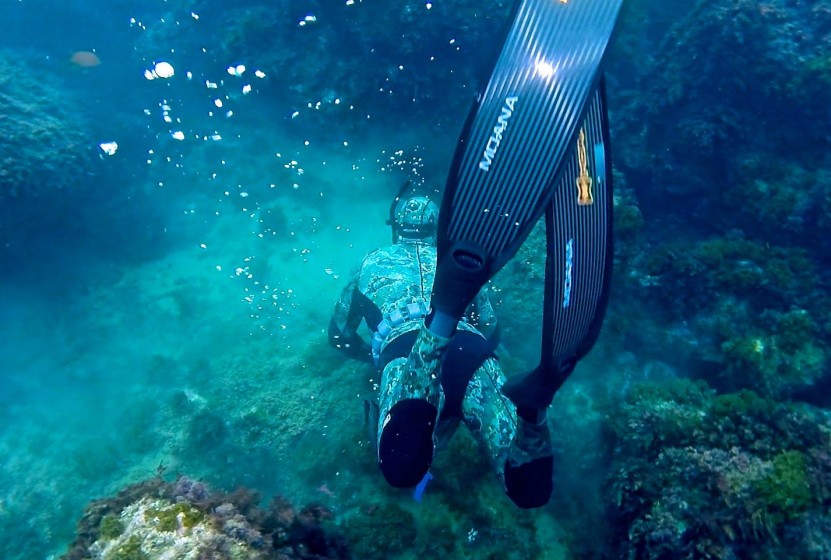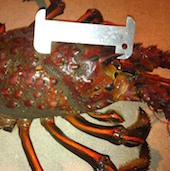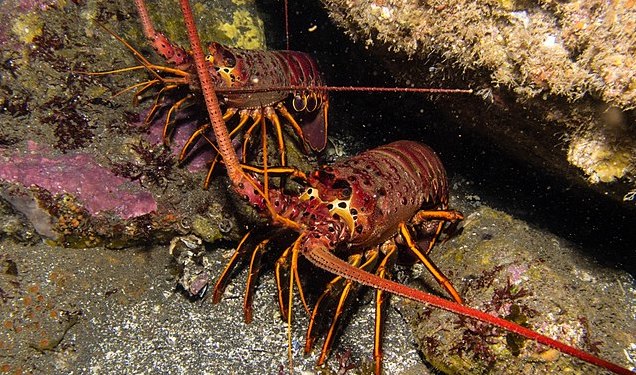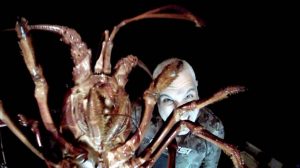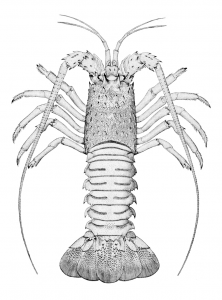The California Spiny Lobster (Panulirus interruptus) Hunt.
Lobster can only be taken by hand. No nets, hooks or other devices may be used
As I crawl along the bottom, on a single breath of air with the surface twenty or so feet above me, I see it- a couple of dark red legs, with a bright orange stripe on them- the tell tale sign of my quarry. As I close in to get a closer look, I see that he’s of legal size, so I thrust my hand into the hole and grab a hold of him. He doesn’t like this.
Flapping his tail and trying to get leverage on me, he fights for all he’s worth, to get way back into his lair, but I’ve got a good hold of what us freedivers call a “knuckle”, which is the thick, double segmented base of the antennae. This is one of the strongest parts of the lobster, so I’m in good shape, or so I think- my lungs burning now, I drop my light and push my other hand into the hole. With two hands, I wrestle him out and head for the surface. He’s a good one, I know he’s legal, but I gauge him anyway to make sure, and into my game bag he goes.
This is the ritual that takes place a few nights a week for me and my freediving friends, from October to March, every year during lobster season. This year marks my 30th, diving the Southern California coast and islands for these tasty critters. They can be found ay any depth, any water temperature really, in any rocky or kelp covered structure you can find.
Diving for lobster at night is my preferred method, as that’s when they venture out of their holes in search of food. I do, on occasion, dive for them during the day, but it’s much harder and more challenging as they are rarely out in the light of day.
The best approach is to find a stretch of structure to dive that looks good, swim with the current, and look for them facing the current, hoping to get a morsel of something they can eat. You’ll see them out on the tops of rocks, clinging to their sides, or moving through crevices between them. They also can be found in the kelp, looking for snails or other small echinoderms or mollusks, which make them an easy grab, if you time it right.
This strain of lobster, similar to its Carribean cousins, have no claws, but they do have very powerful jaws, that sit just underside the antennae. Be sure to keep your fingers clear!
In California, the season runs from Early October to mid March. Spiny lobsters can only be taken during this time. You will need a California state salt water fishing license to retain them, and the limit is seven lobster per person, per day. You will also need a lobster report card, which can be obtained anywhere you buy your license. You must keep your license handy, either on your boat or in your car so that authorities can verify that you are allowed to fish in California. It is also your responsibility to ensure that you are fishing in a legal area and not a preserve or any other no take zone.
This card must be filled out prior to entering the water, and then when you’re finished with your dive, you must fill in the number of lobster retained. At the end of the season, this card gets mailed to the California Department of Fish and Wildlife, so they can compile the data to more accurately manage the fishery.
A lobster gauge is also required to measure your catch, as the carapace length can only be larger 3 1/4 inches, for the lobster to be retained or called a “keeper”. The gauge is fairly easy to use. You simply place it over the carapace (which is the front section of the lobster), and if it does NOT fit into the gauge, it’s of legal size and may be kept.
Lobster can only be taken by hand. No nets, hooks or other devices may be used, besides that wouldn’t be very sporting. For all the regulations and more specific season dates, visit the California Department of Fish and Wildlife. Following the law and being an ethical hunter means the lobster population can continue to thrive and be enjoyed into the future.
Tanks may be used, but my friends and I freedive for them. This means we can’t access the deeper “bugs”, but we’re all experienced divers, who have good breath holds, and can stay down at depth for extended periods of time. This is a skill developed over years doing it and the experience of being in the water all the time. All divers should always follow basic safety precautions such as diving with a buddy, knowing the area you are going to dive and the old axiom: plan your dive and dive your plan. The more comfortable you become with the ocean environment, the more efficient of a hunter you’ll become.
Good luck and dive safe!



